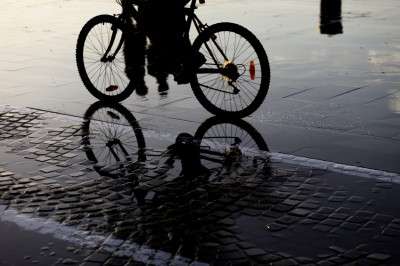Weather conditions were a major factor in commuters’ riding decisions according to a recent study. Credit: © UygarGeographic
One of the most effective ways for governments to encourage commuters to cycle, despite temperature extremes or rain, is to provide facilities such as bicycle parking, showers and change rooms, a report shows.
Researchers from Monash University looked at how cyclists responded to changing weather conditions.
PhD student and lead researcher, Farhana Ahmed from the Institute of Transport Studies, said the government's National Cycling Strategy aimed to double the number of people riding by 2016. To achieve this, policy makers had to take cyclists' preferences into account, especially in regards to inclement weather.
"Weather conditions were a major factor in commuters' riding decisions, but access to end-of-trip facilities also played a significant role in whether people decided to ride despite poor weather," Ms Ahmed said.
"The study highlighted how the availability of facilities such as secure bicycle parking, undercover bicycle parking, showers, changing rooms and lockers/storage facilities influenced whether cyclists would use their bikes on days of inclement weather."
More than 50 per cent of respondents said the availability of end-of-trip facilities affected their decision to ride to work in adverse weather.
"There is a need to understand the degree to which investments in these facilities, tailored to the needs of cyclists, may minimise the impact of weather on cyclists' travel behaviour," Ms Ahmed said.
Most Australian cyclists wear riding gear on their bikes, and therefore need to be able to change and perhaps shower before they start work.
"It is important that appropriate facilities are provided close to major work centres to increase the likelihood of cyclists riding to work in all conditions," Ms Ahmed said.
Ms Ahmed said building more facilities would help turn casual riders into committed cyclists who rode to work more than three times a week, and consequently had a reduced impact on the environment.
There could be another flow-on effect in that if they did decide not to ride, they might take public transport rather than their cars.
"We found that committed riders were more likely to take public transport than private cars on adverse weather days, so if more facilities were available there is the possibility casual riders would also make this transition," Ms Ahmed said.
Provided by Monash University





















